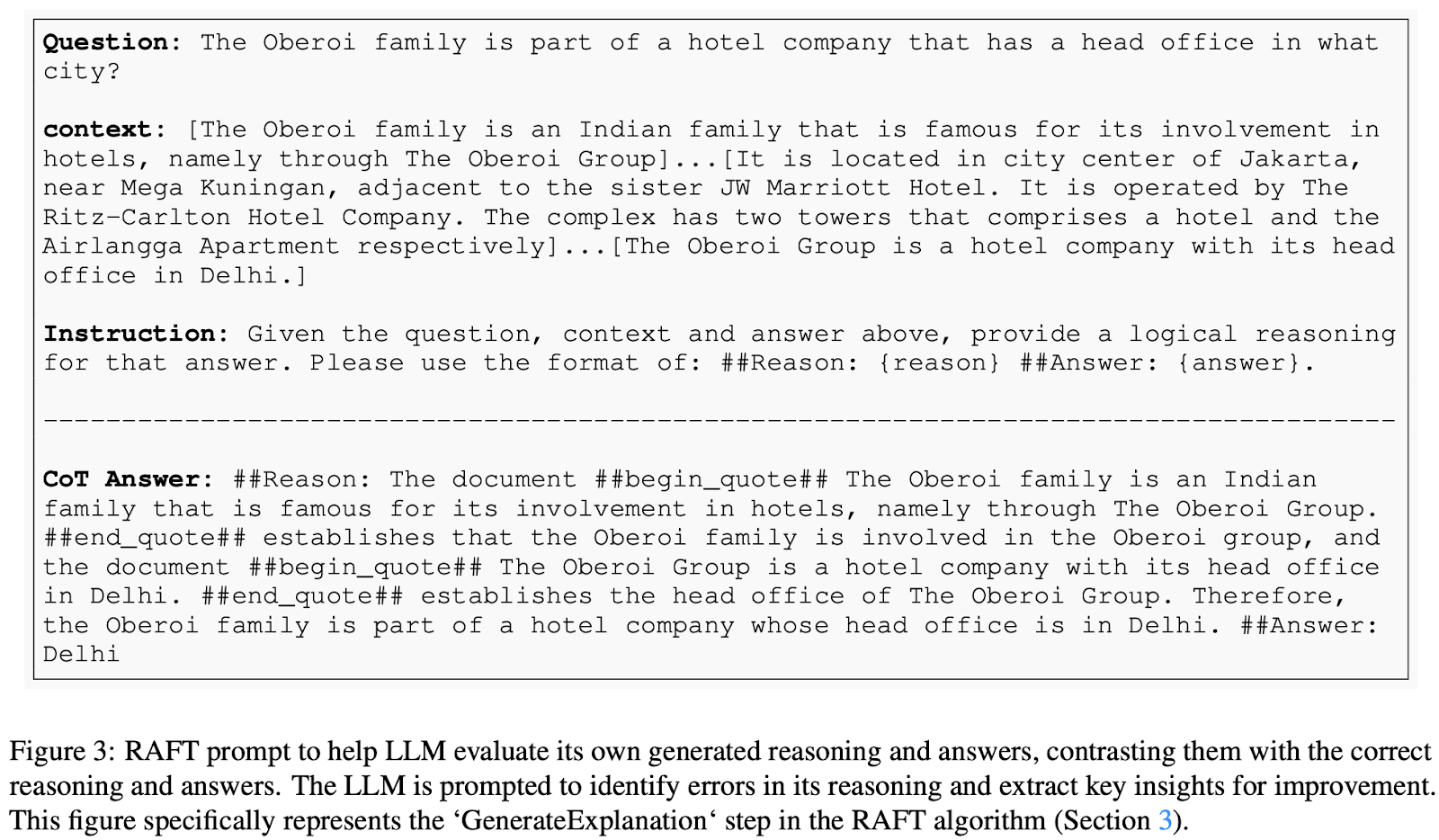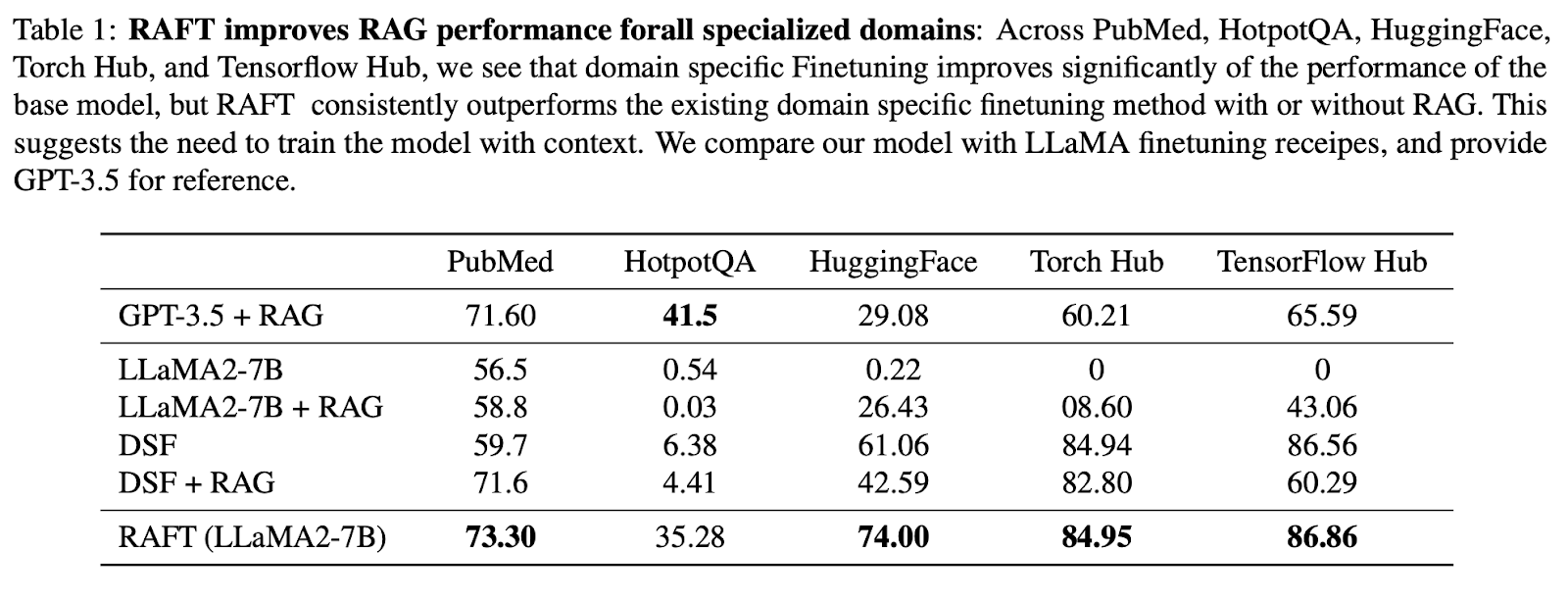course
What is RAFT? Combining RAG and Fine-Tuning To Adapt LLMs To Specialized Domains
RAFT combines Retrieval-Augmented Generation (RAG) and fine-tuning to boost large language models' performance in specialized domains
May 2024 · 11 min read
Topics
Continue Your AI Learning Journey Today!
2 hours
25.7K
course
Developing LLM Applications with LangChain
3 hours
6K
course
Introduction to LLMs in Python
4 hours
6.5K
See More
RelatedSee MoreSee More
blog
What is Retrieval Augmented Generation (RAG)?
Explore Retrieval Augmented Generation (RAG) RAG: Integrating LLMs with data search for nuanced AI responses. Understand its applications and impact.
Natassha Selvaraj
8 min
tutorial
Boost LLM Accuracy with Retrieval Augmented Generation (RAG) and Reranking
Discover the strengths of LLMs with effective information retrieval mechanisms. Implement a reranking approach and incorporate it into your own LLM pipeline.
Iván Palomares Carrascosa
11 min
tutorial
An Introductory Guide to Fine-Tuning LLMs
Fine-tuning Large Language Models (LLMs) has revolutionized Natural Language Processing (NLP), offering unprecedented capabilities in tasks like language translation, sentiment analysis, and text generation. This transformative approach leverages pre-trained models like GPT-2, enhancing their performance on specific domains through the fine-tuning process.
Josep Ferrer
12 min
tutorial
Mastering Low-Rank Adaptation (LoRA): Enhancing Large Language Models for Efficient Adaptation
Explore the groundbreaking technique of Low-Rank Adaptation (LoRA) in our full guide. Discover how LoRA revolutionizes the fine-tuning of Large Language Models.
Moez Ali
10 min
tutorial
How to Improve RAG Performance: 5 Key Techniques with Examples
Explore different approaches to enhance RAG systems: Chunking, Reranking, and Query Transformations.
Eugenia Anello
tutorial
Fine-Tuning LLaMA 2: A Step-by-Step Guide to Customizing the Large Language Model
Learn how to fine-tune Llama-2 on Colab using new techniques to overcome memory and computing limitations to make open-source large language models more accessible.
Abid Ali Awan
12 min


